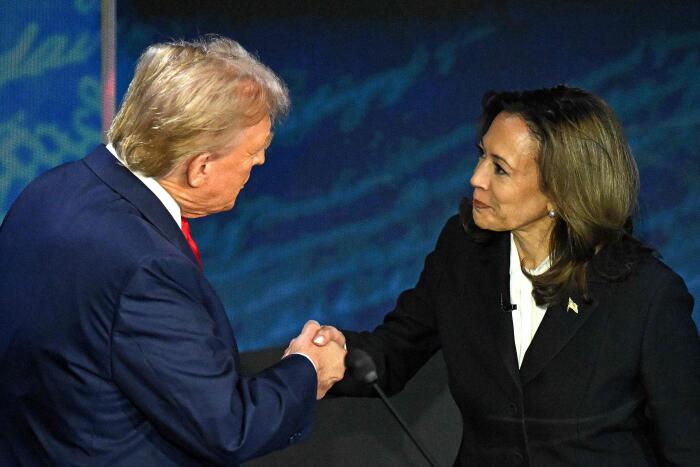As former President Donald Trump and Vice President Kamala Harris gear up for a highly polarized election, Wall Street indicators seem to be at odds with political betting markets.
With investors piling money into wagers on Trump’s return, the stock market appears to be hinting at a different outcome.
The S&P 500 index has surged over 10% since August, historically a bullish signal for the incumbent party’s candidate.
But with complex political dynamics and divided public opinion, even Wall Street analysts are cautious about reading too much into the market’s direction.
The S&P 500’s historical track record on presidential elections
Since 1928, the S&P 500 has accurately predicted the outcome of 20 of the last 24 presidential races, tracking the performance of America’s largest public companies.
Generally, a rising index in the months leading up to Election Day suggests confidence in the incumbent party’s victory, while a decline signals anticipation of change.
This year, the market’s upward trajectory could imply a Democratic win, especially as Kamala Harris took the ticket from President Joe Biden over the summer.
“The market’s making a call for Harris to win,” said Adam Turnquist, chief technical strategist at LPL Financial, adding,
When there’s more certainty about the incumbent party winning, there’s just a level of comfort that the market has with that certainty.
He believes the S&P 500’s rise reflects stability in the policies under the current administration, which the market prefers over an unpredictable shift in governance.
Market experts raise skepticism over the S&P 500’s predictive power
Some financial experts are cautious about using the stock market as a definitive electoral predictor, pointing out that today’s index is increasingly disconnected from the broader economy.
Monica Guerra, Morgan Stanley Wealth Management’s head of US policy, told POLITICO in a report that the S&P 500 is no “crystal ball.”
According to her, much of the market’s growth has been driven by gains from tech giants and the Federal Reserve’s actions to control inflation rather than political events.
Similarly, finance professor Reena Aggarwal of Georgetown University questions the index’s relevance today:
“The market and the broader economy — there’s a disconnect,” she said.
In contrast, billionaire investor Stanley Druckenmiller has voiced confidence in Trump’s chances, pointing to trends in bank stocks, cryptocurrency, and the social media venture Trump Media & Technology Group, all of which he believes would benefit from a Trump victory.
Trump Media, for instance, has seen its stock soar over 200% recently, as speculation around Trump’s potential return intensifies.
Divided markets reflect divided voters
Wall Street’s mixed signals could be a direct reflection of the polarized political landscape.
For the first time in recent elections, indicators are not aligning uniformly.
A report from Morgan Stanley suggests that a basket of investments benefiting from a Republican win has outperformed a Democratic counterpart by 10% this year, thanks to growth in sectors like energy and finance.
Guerra sees this split as a sign of the election’s true unpredictability.
“This is a true toss-up. You can see that dynamic play out both in the markets and the economy,” she said.
The conflicting indicators could also be due to the diverging economic perspectives of voters, according to Grimmer.
As the election approaches, Grimmer warns that the S&P 500’s historical correlations may not hold:
You can only use history so much. We’re just going to have to wait and find out.
It’s a coin flip.
The economy’s divided picture heading into Election Day
This election cycle, the disparity between stock market movements and public sentiment has made it challenging to rely on traditional financial indicators.
In past decades, the S&P 500 may have reflected the economic outlook more accurately, as it was heavily composed of industrial and energy companies with larger workforces, representing the broader economy more closely.
But as technology giants dominate today’s index, analysts like Aggarwal believe the S&P may not capture voters’ economic concerns as reliably.
Even so, Turnquist from LPL Financial stands by the historical trend, remarking that even if Wall Street isn’t the final predictor, investors’ actions in the run-up to Election Day still provide a window into the market’s perception of political stability.
But with Wall Street split and voters anxious, the final call may hinge on more than just market movements.
The post Is Wall Street betting on a Harris victory despite Trump’s surge in polls? appeared first on Invezz

